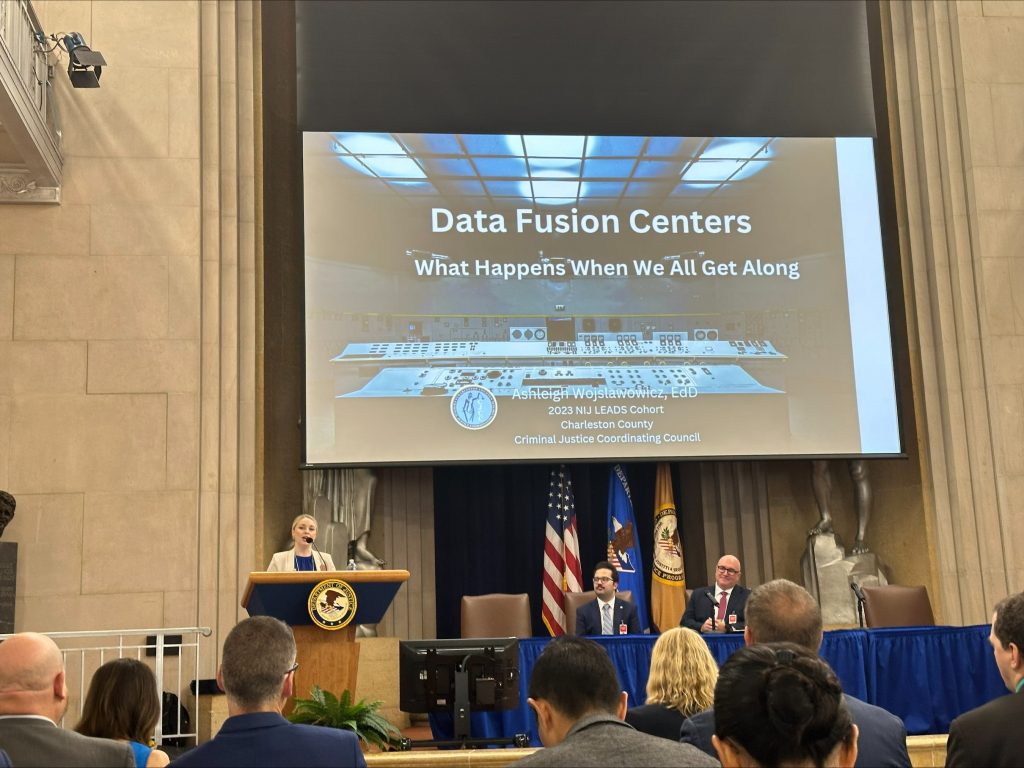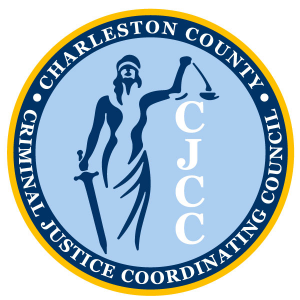Perhaps the expertise you are looking for is right in front of you. These are the words of advice researchers have distributed without hesitation following the multiyear effort exploring law enforcement staffing at the Charleston, South Carolina, Police Department. They gained insight into how evidence-based and practical “what works” approaches should intersect to produce sustainable and effective operations. Ironically, there has been an intentional avoidance of arguing for generalized best practices. Instead, what is shared with police and other public safety entities is a roadmap toward acquiring personal and agency-specific findings stemming from truly getting to know their own agency.
However, this endeavor did not begin with an external contracted entity, consulting agency, or awarded grant money. The research design, findings, and strategic applications were developed at no cost to the organization and, as previously inferred, were personalized to the culture and ecosystem of the agency examined. How then did it start? The answer: professional staff (i.e., civilians) who are experienced in the sought-after skillset. The origination of these research efforts is somewhat nontraditional when compared to many police research partnerships, and yet is arguably one of the very resources overlooked when seeking to conduct evidence-based assessments. To make the case for why there is needed innovation and inclusion of professional staff members and other nonsworn community resources in law enforcement problem-solving, I start with my lived experience.
Background
As the world faced the peak of the COVID-19 pandemic in late 2020 and early 2021, police research studying staffing concerns began to attract attention in the United States. Police recruitment and retention literature gained new traction as both academics and executive leadership alike were directed to an unprecedented staffing crisis, where retirements and voluntary resignations were reported to be increasing, and hiring new officers was perceptually more difficult.1
Situated within this period, I served the Charleston Police Department in a nonsworn position for over a decade—first as a crime scene investigator (CSI) then as a master CSI, the equivalent of a patrol team sergeant. During my responses to crime scenes alongside sworn colleagues, I was acutely aware of the stressors that impact officers, and shared several of these stressors, such as feeling the after-effects of high-profile mass casualty incidents and active shooter responses but also the unanticipated impacts of speaking to a victim of abuse or a child too comfortable with seeing violence. The nontraditional work schedule of rotating shifts, call-outs, emergency operations, and holidays established camaraderie among coworkers (sworn and nonsworn alike). It was a positive binding force despite the occasional gray areas that my position fell under when it came to operational planning. Yet, these same factors created challenges for a life outside of the job, requiring creative alternatives for gatherings and celebrations for my non-work family to face. These nuances present within the job, and many more that are not listed, led to experiences unable to be simulated or substituted—a factor not taken for granted as a researcher.

At the same time, I was concluding dissertation research, which examined law enforcement recruit career motivations amid a post-Ferguson era.2 It was after discussing this topic with a coworker, who happened to be the recruitment officer for the agency, that our shared passion for evidence-based practices became evident. Multiple projects, conferences, and publications later, they had set precedence for future data application within the agency. Not only did we uncover why individuals chose our agency as opposed to others nearby but secured momentum into discovering why agency employees remained and reinforced the importance of measuring employee engagement.3 Future collaborations followed for the agency as several members participated in the National Institute of Justice’s Applied Criminology and Data Course (ACDC)—one of whom was a civilian data analyst—which produced additional insights into retention predictability and return on investment figures.4
None of the valuable “evidence” collected throughout these projects came from behind crime scene tape. The data, insight, and implementation strategies gained by the agency throughout these multiple projects were a result of civilian police employees functioning in roles outside of their traditional job descriptions. Moreover, the willingness and enthusiasm brought by sworn colleagues in this partnership to uncover solutions that strengthened everyone generated an exemplary and productive research collaboration.
As a nonsworn police employee who was permitted to step outside the box of formal job description duties, I can attest to the increased value and ownership felt for my agency as I became more invested in a form of problem-solving aimed at the inner workings of the organization. The data obtained was more than just numbers. Each figure represented a friend and colleague, as well as a glimpse into their well-being and invited an opportunity to do good. Leadership support was key, as the late-Chief Luther Reynolds allowed this nontraditional research team the opportunity to challenge the norm of action-based research to the benefit of all involved.
“Consistent with recommended strategic planning practices, gathering cross-sectional input of where attention should be directed will provide a more robust perspective of where innovation can best be applied”
Using the Available Talent
A targeted approach to civilian integration into nontraditional roles can be challenging for police leadership and staff alike, as this method asks individuals to think differently about how they view themselves. Notably, this way of thinking is likely not the norm for most law enforcement operations and is much more complex than simply adding an “other duties as assigned” label to a job description. Yet, role innovation can open the floodgates of information into what is possible with the talent an agency already possesses. The potential success far outweighs the cost of maintaining the status quo. Navigating this atypical approach can be made less intimidating, and more likely to garner tangible results, by deconstructing the process into three areas for consideration: Where to Innovate, How to Evaluate, and Success to Anticipate.
Where to Innovate
Deciding where to innovate is heavily reliant upon an understanding of the agency’s culture and the unique challenges it faces. For some, this is an easy target to identify. For others, it will require a process of further understanding how the agency operates—not at the overarching functional level but at the granular, to include personalities, team dynamics, and where resistance may be present to organizational change.5 Consistent with recommended strategic planning practices, gathering cross-sectional input of where attention should be directed will provide a more robust perspective of where innovation can best be applied.6 If input is derived from the civilian members themselves, even better. Integrating civilian staff into organizational problem-solving will bring about new areas of conversation and unique perspectives. Civilian staff see how the agency is performing from a perspective that adds immense value to decision-makers. It’s time to reinforce the connection civilian staff have with the police agency’s mission and allow them to be more active participants in serving communities.
“Acceptance to change can take time and that, when challenged to consider their roles differently, some must mentally work through how their perspectives could add value.”
As with any type of innovation process within an organization, there is a certain level of risk that is undertaken. Business and management research has well documented the impact of employee autonomy on innovation, finding that maintaining control too tightly will ultimately stifle innovative thinking and creativity.7 The risk, then, is relinquishing that control to foster an environment that is rich with new ideas and provides a protected space to fail, regroup, and keep going. The more ownership generated increases the dedication to produce an output with value.
How to Evaluate
Embracing innovation requires a two-fold evaluation process. First, knowing the skillset and interests of civilian employees is a necessity to cultivate true ownership. Leadership can look to diversity in education and background as initial indicators; however, the lived experience also provides a broad scope of potential intersections between organizational goals and employee input, which is acquired only through relationships. Within the process of understanding staff, some individuals will be upfront regarding wanting to expand their role in the organization and how they anticipate future involvement while others will be slower to voice opinions. Remember acceptance to change can take time and that, when challenged to consider their roles differently, some must mentally work through how their perspectives could add value. Do not let someone’s hesitancy automatically be interpreted as resistance.
The second piece to the evaluation process is determining where does this type of creative problem-solving fit. Where do areas exist within department functions that are both suitable and appropriate for engaging civilian staff? Research and expanded data analysis are just one area that can be considered by leadership. Others include peer support, community engagement initiatives, review boards, interview panels, crisis intervention, social media and communication efforts, or other specialized units. Granted, there are some units where civilian staff may operationally not be a match, but a good place to start is to consider groups and units that comprise solely sworn officers and ask if the involvement of civilian personnel could expand resource capacity. Professional and civilian staff undergo several of the same eligibility and onboarding conditions as sworn officers (i.e., hiring requirements, background check, psychological exam, physical exam, drug test, and polygraph). Why not take advantage of the talent already obtained?
Success to Anticipate
When the intention of pursuing innovation is set and the agency wholly commits to the evaluation process of personnel suitability and target areas, leadership should not be surprised when it works. Expect to be presented with new ideas, routes to increased efficiency, and more impactful suggestions for agency operation. Give the unconventional serious consideration—but, at the same time, ensure those who are generating outputs have the information needed to produce initiatives that are strong candidates for implementation.
“Sharing of burdens fosters ownership across the community in a collective recognition that difficulties often left to law enforcement to address cannot and should not be done alone”
The practice of anticipating success is not preparing a response to praise hard work, only to continue business as usual. Rather, anticipating success implies a level of accountability demonstrated by laying the groundwork for what is to come.8 The expectation of increasing capacity for problem-solving, including specific application of the work product produced, generates excitement over what is possible and reinforces commitment to the agency they have chosen to serve.9 Empowered employees produce good work and are positively reinforced when they see their efforts contribute to the organization’s operation.10 Be deliberate with the output produced from these innovative collaborations—both successes and lessons learned add value to the organization.
Finally, success must be quantified. Seek to establish benchmarks that measure effectiveness of new strategies. Success must be definable and measurable. Time is a valuable resource, and time spent producing busy work or practices that do not increase performance can hinder opportunities for genuine success.
Nonsworn Resources—Areas for Consideration

As organizations seek to further engage civilian staff, whether through an expanded role or establishing new positions such as embedded counselors, social workers, and behavioral health, an additional resource available lies in their literal backyard: community partners. The Charleston County’s Criminal Justice Coordinating Council (CJCC) provides external support to local police by triaging justice system data to serve as resources for decision-making.11 Their role is to bring community stakeholders together along with justice system leaders representing all three of the justice system pillars: police, courts, and corrections. The strengthened relationships and joining of resources better serve the county’s agencies and community from a holistic perspective.
Nonprofit organizations and community resources can span from programs targeting juvenile enrichment and mentorship to substance abuse recovery and housing assistance. These types of resources are often underutilized due to a lack of awareness yet can target root issues that fall outside the police purview. The CJCC model provides a network for community and government resources to intersect while fostering a collaborative approach to problem-solving. Further, the issues brought forward by justice system key players have demonstrated time and again that ripple effects exist across organizational lines. Challenges identified in one area often impact others to some extent. This sharing of burdens fosters ownership across the community in a collective recognition that difficulties often left to law enforcement to address cannot and should not be done alone.
Recently, the Charleston County CJCC named Chief Mark Arnold of the Mount Pleasant Police Department as chair of the council’s executive committee. With Chief Arnold’s leadership, the council will continue to funnel data into leadership hands to support evidence-based decisions, as well as support local police partners with critical community-based infrastructure.
Whether considering role innovations with internal civilian staff or evaluating support from external community resources, police agencies can dynamically address their needs with embedded solutions. Encouragement can be found in the fact that there are individuals ready to step up and into finding solutions. The cost? Nothing. The gain? Let’s find out together. d
Notes:
1Police Executive Research Forum The Workforce Crisis, and What Police Agencies Are Doing About It (2019).
2Ashleigh N. Wojslawowicz et al., “Gauging the Impact of Negative Media Publicity on Career Decisions: Exploring Police Recruit Motivations During a Recruitment Crisis,” Policing: An International Journal 46, no. 2 (2023): 383–400.
3Ashleigh N. Wojslawowicz et al., “‘I Really Felt Wanted’: Police Recruitment Strategies Within a Competitive Labour Market,” Policing: A Journal of Policy and Practice 18 (2024), paae003; Ashleigh N Wojslawowicz, Anthony Gibson, and Dannelle Goldberg, “Stay Engaged and Retain the Workforce: Multidimensional Approaches to Understanding Officer Retention and Risk Factors” (presentation, IACP Annual Conference and Expo, San Diego, CA, October 15, 2023).
4Bradley J. O’Guinn et al., “Does Prior Military and/or Law Enforcement Experience Influence Officer Retention? A Case Study of the Charleston Police Department,” Policing: A Journal of Policy and Practice 18 (2024), paad087.
5Lee G. Bolman and Terrence Deal, Reframing Organizations: Artistry, Choice, and Leadership, 6th ed. (John Wiley & Sons, 2017).
6John M. Bryson and Farnum K. Alston, Creating Your Strategic Plan: A Workbook for Public and Nonprofit Organizations (Josey-Bass, 2011).
7Ana Burcharth, Mette Præst Knudsen, and Helle Alsted Søndergaard, “The Role of Employee Autonomy for Open Innovation Performance,” Business Process Management Journal 23, no. 6 (2017): 1245–1269.
8Greg Bustin, Accountability: The Key To Driving a High-Performance Culture (McGraw Hill, 2014).
9Daniel H. Pink, A Whole New Mind: Why Right-Brainers Will Rule the Future (Riverhead Books, 2006).
10Tony Wagner, Creating Innovators: The Making of Young People Who Will Change the World (Scribner, 2019).
11“Home,” Charleston County Criminal Justice Coordinating Council.
Please cite as
Ashleigh Wojslawowicz, “Finding Success from Within,” Police Chief Online, November 13, 2024.



